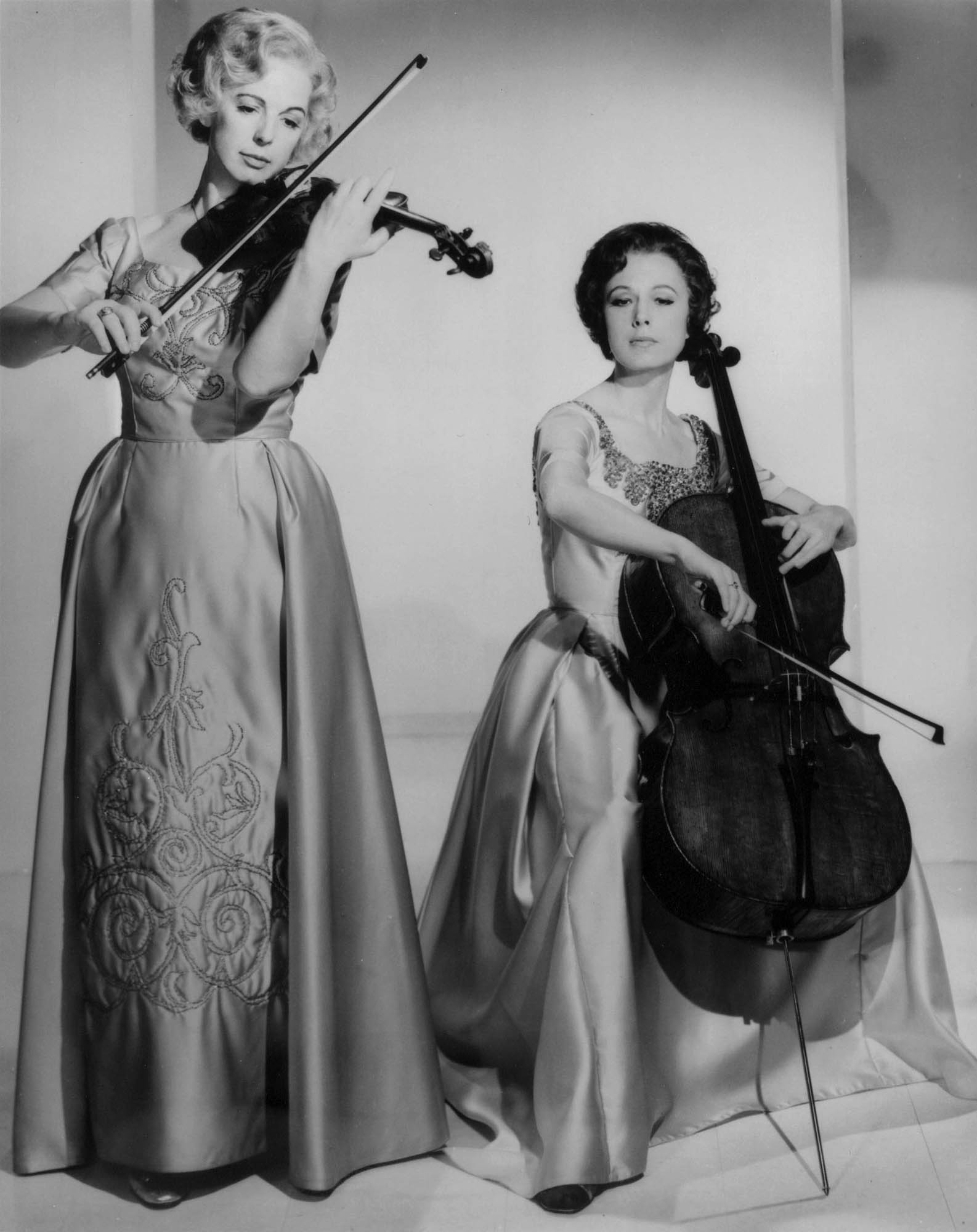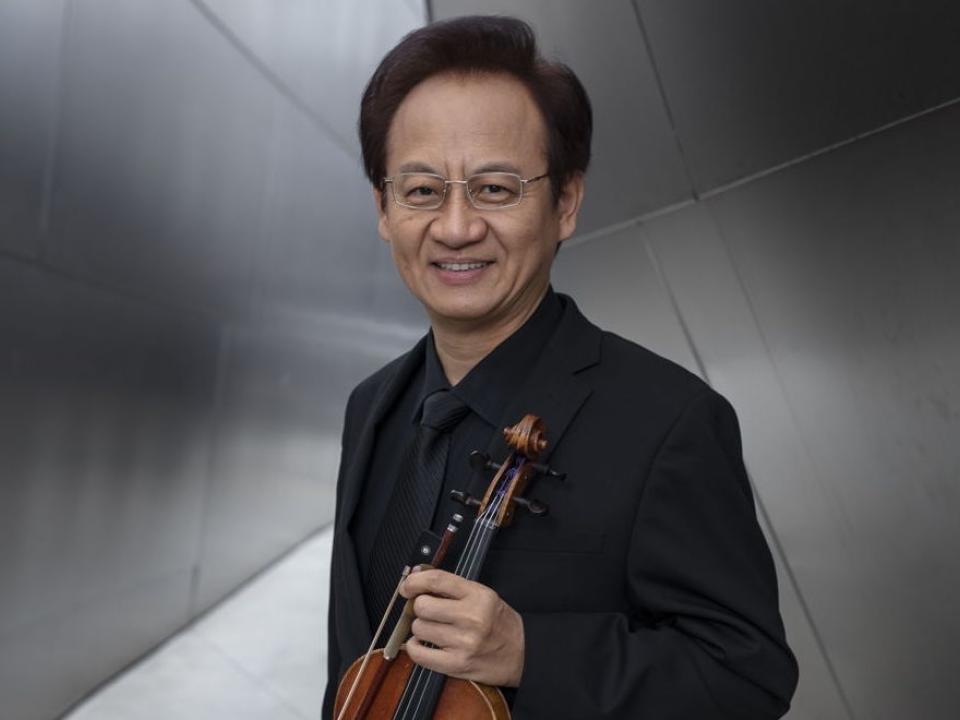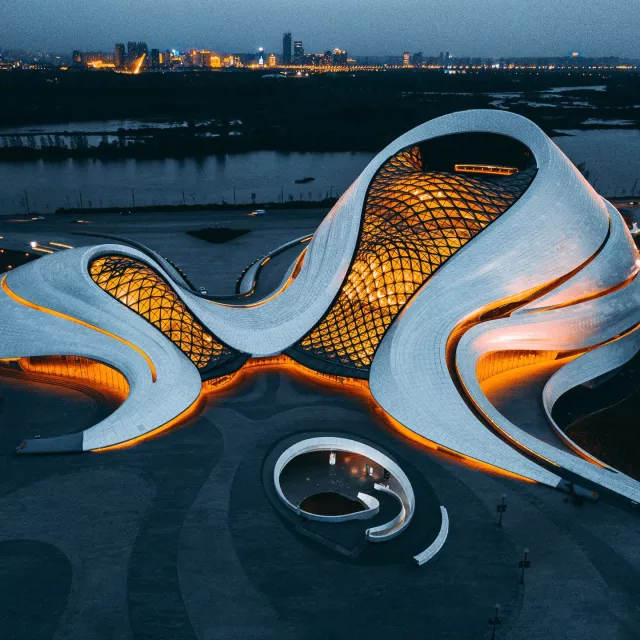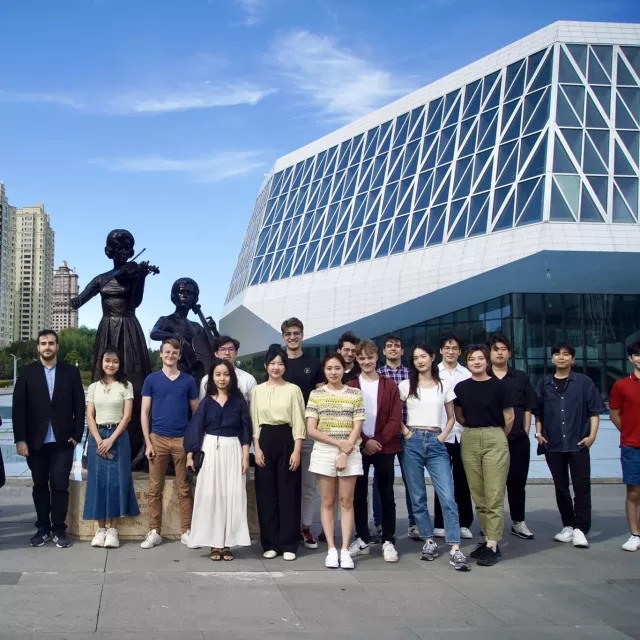Born to teach

The legacy of Alice and Eleonore Schoenfeld
When Alice Schoenfeld passed away in 2019, violinists around the world called it “the end of an era”. Like her sister Eleonore, she had dedicated the majority of her 98-year-life to the art of playing and teaching the violin, having trained multiple generations of young artists. Having started to teach at the University of Southern California in 1959, her tenure as a violin professor lasted nearly 60 years.
The musical presence and vibrant character of Alice Schoenfeld proved influential in the lives of her many students. She will not soon be forgotten…
Ralph Kirshbaum, the Gregor Piatigorsky Chair in Violoncello and Chair of the Strings Dept., University of Southern California
Alice and Eleonore Schoenfeld were born in Maribor, Yugoslavia- today´s Slovenia- to a Polish father and a Russian mother. The family moved to Berlin in 1931, where the two sisters received excellent musical training already from a very early age. Alice began to study with Karl Klingler, a former student and close friend of Joseph Joachim, and debuted with the Berlin Philharmonic at age 10. Joseph Joachim, renown all over the world, was the authoritative interpreter of Classical and Romantic music at the time, and the development and maturation of the Joachim’s violin school were closely connected to Mendelssohn, Brahms, Schumann and Bruch. This profound legacy led the German violin school into a rigorous, yet brilliant style and legitimate pedagogy. The appealing style of playing highlighted the performers’ standardized playing technique, combined with drama and scenic imagination.
Alice´s sister, Eleonore Schoenfeld, began as a ballet dancer at the Berlin State Opera and only later on started to play the cello, studying with Karl Niedermeyer and Adolph Steiner at the Hochschule für Musik. They soon began performing together and became known as the “Schoenfeld Duo” both in Germany and other European countries.
Little is known about the performing activities during their time in Berlin and throughout World War II. According to Alice Schoenfeld, there was only a minor Jewish influence in their family, so they were able to stay in or near Berlin throughout the war, performing until it was no longer possible. Later, the sisters used art as a tool to preach human kindness after their firsthand experience with WWII. Through music, the international language, they advocated integrity, truth and beauty of spirit throughout their lives.

In 1952, wary of the growing restrictions in East Germany, the family immigrated to Los Angeles, where the two sisters had to completely rebuild their careers. The sisters continued to perform and record (the duo made over 200 recordings for radio stations all over the world), gradually focusing more and more of their energies on teaching. Neither sister ever married. "Suitors were out of luck," said a 2012 article in the LA Times. "(Alice) said she decided early on that her musical commitments wouldn't mix with having a husband or children. Eleonore dipped a toe in those waters, then withdrew it. 'My sister was engaged to a lovely gentleman, a professor at Stanford,' Alice said, but she eventually called it off. 'She never felt it would be fair to me or herself, or her husband.'"
In 1959, the then-dean of University of Southern California Thornton School of Music asked Alice and Eleonore to join their faculty, alongside Jascha Heifetz, Gregor Piatigorsky, William Primrose, and many other distinguished musicians.
In addition to her position at USC, Eleonore Schoenfeld was a master teacher at the Colburn School of Performing Arts in Los Angeles, and she worked on the faculty of the Arts Academy in Idyllwild, Calif. Beginning in 1979, she directed the International Gregor Piatigorsky Seminar for Cellists. Eleonore was also the recipient of the prestigious USC Ramo Music Faculty Award in 1990, the Eva Janzer Memorial Award „Grande Dame du Violoncelle“ from Indiana University in 1993, and the National Distinguished Service Award from the American String Teachers’ Association in 1996.
Like her sister Eleonore, Alice Schoenfeld quickly became known as one of the most famous violin professors in the US, fostering countless students. Many of these students became winners of major international competitions, and almost every first-rate orchestra in America has a number of Schoenfeld students among their players.
"I have been flooded with childhood memories at the passing of Alice. As her student, you were the center of her undivided attention, which was an incredible life experience for a young student. A great lady, she and her sister carved the path and laid a strong foundation for many who continue to this day to carry their legacy with their inspired approach to music-making and respectful traditions.”
Anne Akiko Meyers
In the early 1980s, Sino-US Rapprochement brought the eyes of great musicians to China. Artists such as Isaac Stern, Yehudi Menuhin, and Alice and Eleonore Schoenfeld were among these pioneers who made the earliest musical visits and gave masterclasses, lectures, and concerts at the Central Conservatory of Music in Beijing and the Shanghai Conservatory of Music.
USC Thornton School of Music was the first music school to provide Chinese students with significant scholarships. The Schoenfeld sisters personally recommended Chinese students, and several hundred Chinese students were recommended for scholarships since the 1980s, a greater number than any other music school. Students under the Schoenfeld sisters’ tutelage include Suli Xue (Artistic Director of the Schoenfeld International String Competition), Timothy Landauer, Xinhua Ma, Yi Du, Liang Chai, Nan Xie, Xueqing Chen, Frank Su Huang, Yingying Zhang, Ingrid Kuo Chun and others.
In 2013, attempts were made to hold a competition in the Schoenfeld sister´s name, and a first edition of the “Alice and Eleonore Schoenfeld intl. String Competition” took place in Hong Kong, as part of the Hong Kong International Music Festival. Due to the interest of the city of Harbin, and with the support by Alice Schoenfeld´s student Suli Xue, a native of Harbin, the competition was later brought to Harbin in Northeastern China, where it remains to this day.
Alice wanted the competition to take place in China, because she thought that China had som many young talents. Harbin was like a second hometown for her, she said that she could even feel the music in the air. When the competition finished, she didn’t want to go home. She was so happy to be in Harbin, she wanted to stay there...
Suli Xue
Suli Xue was exemplary of the success story of Schoenfeld sisters: after studying at the Shanghai Conservatory of music, he received a full scholarship to study with Alice Schoenfeld at USC and went on to be a member of the Los Angeles Philharmonic. Today, he is also the chair of the International Schoenfeld Society of Music, the organising body of the Schoenfeld Competition.
©WFIMC 2023/FR


